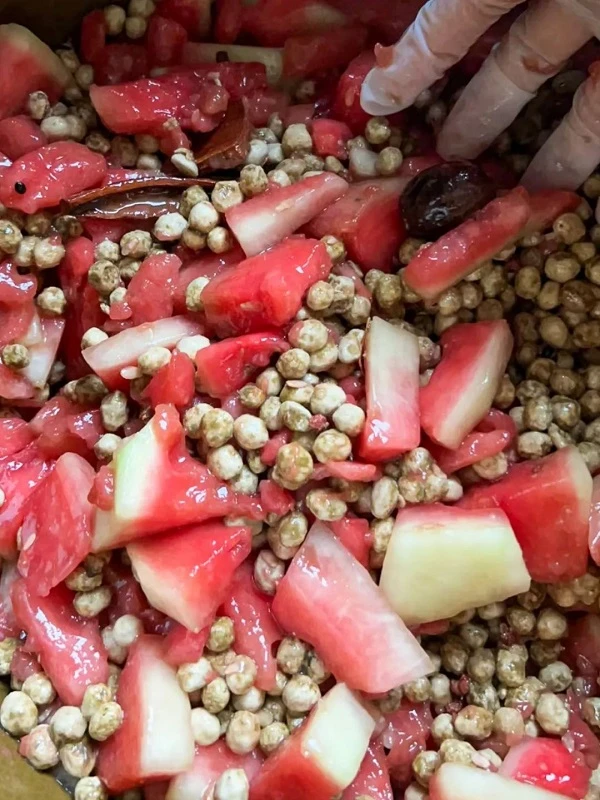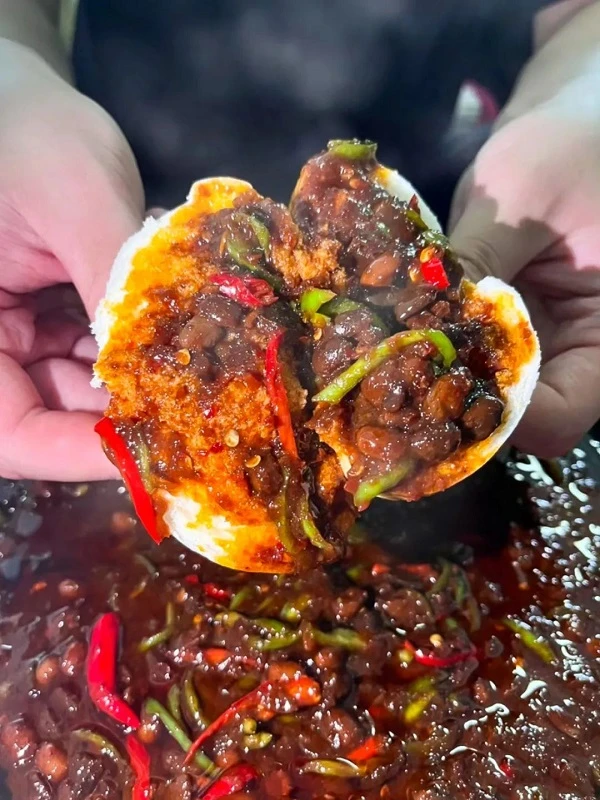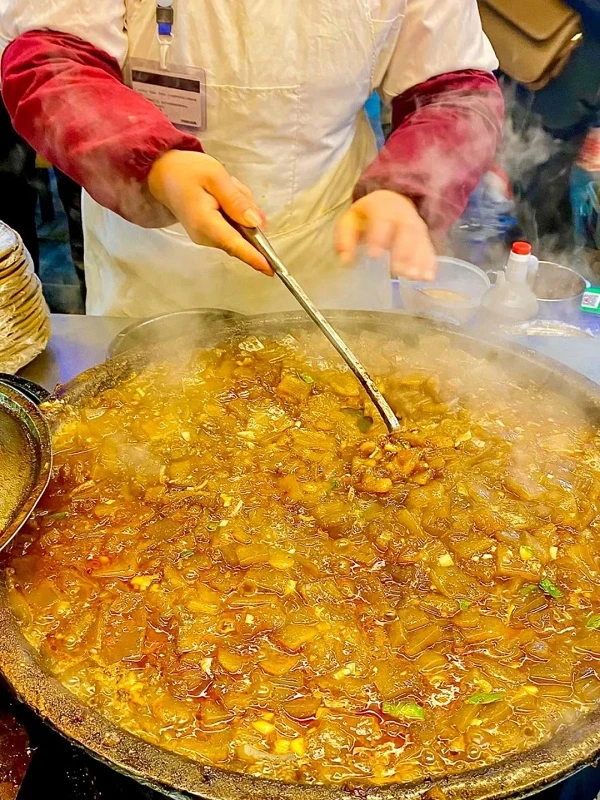Watermelon is an iconic summer fruit, loved for its refreshing sweetness. Yet, in Henan, this beloved fruit transforms into something unexpected: a savory condiment known as watermelon jam. This culinary invention sparks fierce debates, with some praising its ingenuity and others struggling to accept it. But what exactly is this watermelon jam, and why does it evoke such extreme reactions?
A Unique Henan Specialty
Watermelon jam, a product of Henan's fertile imagination, is a cultural staple that defies expectations. While most people associate watermelon with sweet, refreshing flavors, Henan's version mixes the fruit with fermented soybeans, resulting in a rich, salty-sweet jam. The bold combination of flavors offers a unique tasting experience—one that shatters the stereotype that Henan cuisine lacks creativity or complexity.
The process begins with ripe watermelons, which are carefully mashed and mixed with fermented soybeans. The mixture is then left to ferment under the summer sun, where the blend of fruity and savory notes develops into a deep, multi-layered flavor. The result is a jam that works equally well as a stand-alone condiment or as a key ingredient in various dishes.

For many locals, watermelon jam is a taste of home. It evokes memories of family meals, where freshly steamed buns slathered with the jam were a common sight. The complex flavor of the jam, with its delicate balance of sweetness from the watermelon and savory depth from the soybeans, is a source of pride for Henan natives. Every Henan household seems to have its own version of this condiment, each with slight variations depending on the recipe passed down through generations.
Despite its deep roots in Henan's food culture, watermelon jam remains a polarizing dish outside the province. When the author offered the jam to a colleague from southern China, they were met with a look of confusion and a hesitant refusal. This reaction wasn't unique. Many people from outside Henan, unfamiliar with the idea of mixing watermelon and soybeans, are unsure whether to embrace the flavor or label it as an oddity.
In fact, reactions to watermelon jam often range from intrigue to outright skepticism. For some, the thought of turning a summer fruit into a savory jam is simply too strange to accept. There's a common misconception that the jam is overly sweet, or worse, that it tastes like spoiled watermelon. This misunderstanding has led to its reputation as a "love-it-or-hate-it" food.
Despite this division, watermelon jam has gained recognition in food circles beyond Henan. In cities like Kaifeng, where it is a common accompaniment to local snacks such as fried rice noodles, watermelon jam has become a beloved ingredient that adds depth and flavor to simple dishes. Its unique blend of fermented soybeans and watermelon makes it a versatile addition to Henan's culinary landscape.
A Childhood Staple for Many Henan Natives
Growing up in Henan, the sight of watermelon jam was as familiar as the summer heat. For many children, including the author, this jam was a lunchbox staple. Whether at home or at school, a jar of watermelon jam paired with freshly baked buns could turn any meal into a satisfying feast.
The author's aunt, a master of watermelon jam-making, continues the family tradition every summer. Her recipe, perfected over years, produces a jam that is the talk of the town. Even when she moved to Xinjiang, she managed to adapt the process, finding that the dry, hot climate of the region accelerated the drying time of the jam and added an extra layer of sweetness to the watermelon.
The tradition of making watermelon jam has deep roots in the author's family, tracing back to the author's grandmother. The grandmother referred to it as "melon bean paste," a term more widely used in rural Henan. The method of making it involves mashing watermelon into a pulp, mixing it with fermented soybeans, and adding spices such as ginger, pepper, and star anise. It is then left to ferment in the sun, where the flavors meld and mature over time.
This jam, rich in heritage, connects generations and celebrates the ingenuity of Henan cuisine. The final product is not just a condiment—it's a taste of Henan's culinary history, preserved in each jar.
The Versatility of Watermelon Jam
Watermelon jam may be divisive, but for those who love it, the possibilities are endless. In Henan, it is often paired with traditional steamed buns, where the soft, fluffy bread provides the perfect canvas for the jam's intense flavors. The slightly sweet and salty profile of the jam enhances the natural sweetness of the buns, creating a simple yet satisfying meal.
Another popular way to enjoy watermelon jam is with noodles. In Henan, a bowl of hand-pulled noodles topped with a spoonful of watermelon jam is a common sight. The jam's savory-sweet richness clings to the noodles, elevating the dish without the need for additional ingredients. For many, this simple meal is a comfort food, offering warmth and satisfaction on even the toughest days.
Beyond noodles and buns, watermelon jam finds its way into other local delicacies. One notable dish is Kaifeng fried rice noodles, where the jam is used as a sauce to coat the chewy, translucent noodles. The combination of textures—the slippery noodles and the rich, slightly sticky jam—makes for a dish that is both hearty and flavorful. In this context, the watermelon jam adds a subtle sweetness to the savory noodles, providing a balance that keeps diners coming back for more.
In the end, watermelon jam remains a symbol of Henan's rich culinary tradition. Whether loved or misunderstood, it stands as a testament to the region's creativity and resourcefulness in transforming everyday ingredients into something extraordinary. For Henan natives, watermelon jam is not just a condiment—it's a taste of home, a reminder of family, and a celebration of the province's unique food culture.



